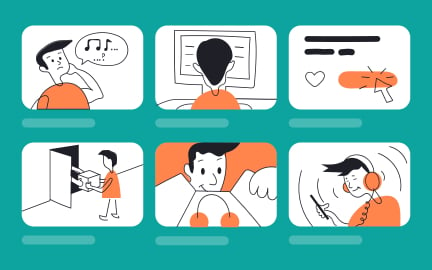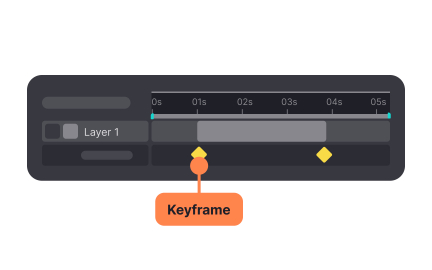Storyboarding
Storyboarding turns flows or product moments into simple visual sequences, helping teams align on user journeys or prototype narratives.
What is Storyboarding?
Your product concepts and user experience designs are difficult to communicate and validate because you rely on written descriptions and static mockups that don't effectively show how interactions unfold over time and across different scenarios.
Most teams struggle to visualize and communicate dynamic user experiences, missing opportunities to identify usability issues and align stakeholder understanding before expensive development begins on concepts that might not work effectively.
Storyboarding is the visual communication technique that uses sequential illustrations to show how users interact with products over time, revealing user journey flows, interaction patterns, and experience narratives that enable better design decisions and stakeholder alignment.
Teams using effective storyboarding achieve 50% faster concept validation, 40% fewer usability issues in final products, and significantly better stakeholder alignment because user experiences are visualized clearly rather than left to interpretation from abstract descriptions.
Think about how animation studios use storyboards to plan movie sequences before expensive production, or how UX designers at companies like Apple storyboard user interactions to validate product concepts before interface development begins.
Why Storyboarding Matters for Experience Design
Your product development lacks shared understanding of user experiences because team members and stakeholders interpret written requirements and static designs differently, leading to misaligned expectations and products that don't work smoothly for actual users.
The cost of skipping storyboarding compounds throughout product development. You discover user experience problems late when fixes are expensive, build features that don't connect naturally in user workflows, and miss opportunities to optimize experiences before development investment.
What effective storyboarding delivers:
Better user experience visualization because storyboards show how interactions unfold over time rather than just displaying isolated interface elements that don't reveal workflow continuity and user journey coherence.
When you storyboard user experiences, design problems become visible early rather than being discovered during user testing or after product launch.
Enhanced team and stakeholder alignment through visual communication that creates shared understanding of user experiences rather than relying on written descriptions that different people interpret differently.
Faster design iteration and improvement because storyboards enable quick experimentation with different user flow approaches before committing to detailed interface design and development work.
Higher user empathy and context awareness as storyboarding forces consideration of user goals, emotions, and situational factors that affect product interaction success.
More strategic feature prioritization through understanding of how different features connect in actual user workflows rather than evaluating features in isolation from user journey context.
Recommended resources
Courses

UX Design Foundations

Design Terminology

Common Design Patterns
Lessons

Animation Theory & Motion

Intro to Wireframing

Wireframes Annotations & Documentation
Projects

My Bestie Nessie - Making a game in one day at the Oakland Museum of Art & Digital Entertainment






